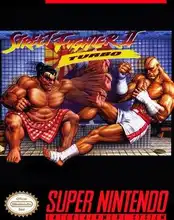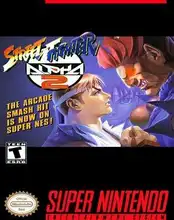When you hear "SF games," does your mind immediately jump to Hadokens, spinning bird kicks, and shouts of "Shoryuken!"? For many retro gamers, "SF" means one thing: Street Fighter. While the initials might also make you think of the Golden Gate Bridge and sourdough bread, in the gaming world, they represent a legendary fighting series that practically invented the genre as we know it.
From crowded arcades filled with the clang of quarters and excited yells to intense basement tournaments on the Super Nintendo, Street Fighter games have left an indelible mark. They brought complex moves, distinct character personalities, and competitive depth to the forefront, creating moments of triumph and heartbreaking defeat that we still talk about decades later.
Let's pull back the curtain on this iconic series, revisit some of its most memorable entries, and figure out how you can jump back into the ring today.
The Earthquake That Was Street Fighter II
While the original Street Fighter existed, it was Street Fighter II: The World Warrior that truly ignited the phenomenon in arcades. Suddenly, fighting games weren't just about simple punches and kicks; they were about mastering special moves, understanding character matchups, and executing complex combos.
Remember the hype when Street Fighter II finally landed on the Super Nintendo? It was revolutionary. The fact that a home console could deliver something so close to the arcade experience felt like magic. Saving up that princely sum for the cartridge was absolutely worth it for the chance to practice Blanka's electric thunder or Ryu's fireballs in your own living room. It wasn't just a game; it was a cultural event, sparking countless hours of practice, friendly rivalries, and the dream of tournament glory.
Beyond the World Warrior: Other Essential SF Games
The legacy didn't stop with SFII. The series evolved, introducing new mechanics and characters that kept the competitive scene buzzing:
- Street Fighter II' (Dash), SFII Turbo, and Super SFII: These iterations refined the formula, adding faster gameplay, new characters like Cammy and Fei Long, and balancing tweaks that kept players coming back. Turbo on the SNES, in particular, felt like the definitive home version for many years.
- Street Fighter Alpha series: With a distinct anime-inspired art style, the Alpha games introduced mechanics like V-Isms, Alpha Counters, and dramatic battles, bridging the gap between SFII and the future.
- Street Fighter III series: Known for its incredibly deep parry system and fluid animation, SFIII (especially Third Strike) is hailed by many competitive players as the peak of the series' technical gameplay, even if it took time to gain mainstream popularity after SFII's dominance.
Each entry added layers, but the core appeal remained: accessible controls hiding deep strategic possibilities.
Why We Still Mash Buttons Decades Later
What is it about these old SF games that keeps drawing us back?
- Pure Gameplay: At their heart, these games are about fundamental fighting game principles – spacing, timing, reads, and execution. They are easy to pick up but incredibly difficult to master.
- Iconic Characters: Ryu, Ken, Chun-Li, Blanka, Zangief – these characters are global icons with instantly recognizable moves and personalities.
- Nostalgia Power: For many, playing these games instantly transports them back to a specific time and place – the arcade, a friend's basement, a summer afternoon.
- Competitive Spirit: Even playing against the AI or friends today, the thrill of landing that perfect combo or clutch anti-air never gets old.
How to Revisit Classic SF Games Today
Thankfully, you don't need a dusty old arcade cabinet or a working SNES to get your fix.
- Official Collections: Capcom has released excellent collections on modern consoles (PS4, Xbox One, Switch, PC) like the Street Fighter 30th Anniversary Collection and Street Fighter Alpha Anthology, bringing arcade-perfect versions (and sometimes home console ports) to your fingertips with rollback netcode for online play.
- Digital Stores: Games like Street Fighter IV and V (and the upcoming VI) are readily available on digital storefronts like Steam, PlayStation Store, and Xbox Games Store.
- Emulation: For purists or those seeking specific ports, emulation (using software like MAME for arcade or SNES9x for SNES) is a popular route, though legality varies depending on game ownership and region.
- GOG.com: While not packed with Street Fighter classics yet, GOG is a great resource for DRM-free PC retro games, and it's always worth checking if classic fighting collections appear there in the future.
Finding Retro Gems in the Bay Area (The Other SF!)
Okay, let's touch on the other interpretation of "SF games." If you're in the San Francisco Bay Area and looking to find physical copies of these classic titles (or any other retro games), you're in luck! The Bay Area has a rich gaming history and a number of fantastic retro game shops. Places tucked away in various neighborhoods offer everything from loose SNES cartridges to rare Japanese imports and sometimes even playable arcade machines. Exploring these shops is a treasure hunt in itself, connecting the digital nostalgia to physical artifacts.
The Fight Continues
Whether you're a seasoned veteran who can still pull off Guile's Sonic Boom blindfolded or a newcomer curious about the roots of fighting games, the classic Street Fighter games offer an incredibly rewarding experience. They are more than just games; they are pieces of history that shaped an entire genre and created lasting memories.
So, pick your character, practice your specials, and step into the ring. The world of classic SF games is waiting.
FAQ
Q: Which classic SF game is the best for beginners? A: Street Fighter II Turbo (or Super Street Fighter II Turbo) is often recommended. It has the classic feel but with faster gameplay and more characters than the original SFII.
Q: Can I play classic Street Fighter games online? A: Yes! The official collections released by Capcom on modern platforms often include online multiplayer modes with improved netcode.
Q: Are the home console versions (like SNES) different from the arcade? A: Yes, there were often differences in graphics, sound, character rosters, and gameplay mechanics due to hardware limitations or design choices. However, ports like SFII Turbo on SNES were remarkably close and beloved in their own right.
Q: Where can I learn the special moves? A: Original game manuals (often available online via sites like Archive.org), online wikis, and YouTube tutorials are great resources for learning character move lists and strategies.


